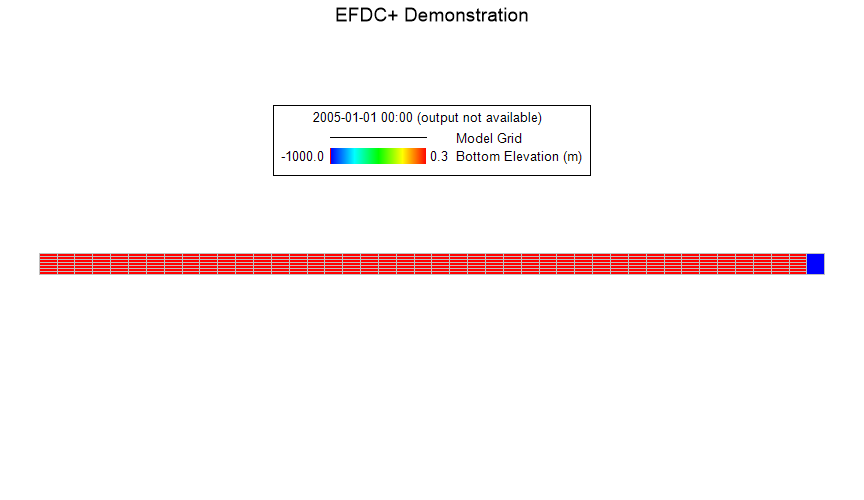Challenges with Remedial Investigations/Feasibility Studies
Many major cities have areas which have historically seen significant industrial and manufacturing operations, including oil refineries, fertilizer manufacturing, and coal yards. Untreated storm water, industrial waste water and domestic sewage released to nearby waterbodies from these areas frequently lead to contaminated sediments. Remedial Investigations (RI) allow in-depth study designed to gather the data needed to determine the nature and extent of contamination of a site. They also serve to assess potential risks to human health and the environment. An RI serves as a foundation for evaluating remediation alternatives in a Feasibility Study (FS). A significant part of the RI/FS is focused on interpreting the site data and developing computer models to aide this process.
Solutions Provided by EEMS
EEMS has been used to support major RI/FS for Superfund sites in the USA because of its powerful capability for simulating sediment resuspension, transport and toxics. Two sediment models are available in the EFDC+ model. The first is the conventional EFDC sub-model developed at Virginia Institute of Marine Science which accurately simulates cohesive and non-cohesive transport. Alternatively, the user may select the start-of-the-art SEDZLJ sub-model developed by Sandia National Labs. This is an increasingly favored approach and used extensively in the Newtown Creek study in New York. It is an improvement on previous models because it may directly incorporate site-specific data (flume studies), while maintaining a physically consistent, unified treatment of bedload and suspended load.
Examples of Studies Done with EEMS
Newtown Creek Hydrodynamic and Sediment Transport Studies
Newtown Creek was designated a Superfund National Priority Site in 2010/2011 under the guidance of the USEPA. NYSDEC, NYCDEP and other stakeholders are coordinating the RI/FS. The channel has been subject to various industrial contaminant inputs along the river over the past several decades.
EFDC+ is being used extensively in hydrodynamic and sediment transport models applied to Newtown Creek. It is selected due to being open source and being linked to a sediment transport model that has the capability to utilize erosion rate data obtained from Sedflume testing i.e., SEDZLJ capabilities (See newtowncreek.info: Section 4, Modeling Memo 1). EEMS now also links SEDZLJ to the toxics sub-model making it especially suited for this study.
Little Lake Butte de Morts Sediment Dynamics, WI, USA
A multidimensional hydrodynamic model of the Little Lake Butte des Morts (LLBdM) was developed in order to support studies of sediment transport dynamics. The insights gained in the modeling provided an enhanced conceptual understanding of sediment and PCB dynamics in LLBdM. This in turn impacted the interpretation of historical and ongoing studies.
Housatonic River Remedial Investigation, MA, USA
For decades, PCBs have been released onto the soil near and into the Housatonic River from a GE facility in Pittsfield, MA. In 1998, after years of scientific investigations and regulatory actions, a comprehensive agreement was reached between GE and various governmental entities, providing for the investigation and cleanup of the Housatonic River and associated areas. Under the terms of the Consent Decree, EPA conducted a detailed modeling study of hydrodynamics, sediment transport, and PCB fate and bioaccumulation in the Housatonic River below the confluence of the East and West Branches and encompassing watershed. EEMS was used in all aspects of work performed by the modeling team. DSI had responsibility for the development of the model grid, hydrodynamic model, sediment transport model, and the PCB transport and fate model.
Download Example EE Models
Download an example model and run with the free EEMS Demo Version.
This example model of the Tra Khuc Estuary in Vietnam demonstrates the coastal modeling capabilities of EEMS and shows salinity intrusion into the estuary. It also includes full sediment transport simulation.
Little Mayer is an example of a SEDZLJ model built using Sedflume data. This model was built by Sandia National Laboratory as part of their testing for SNL-EFDC.
Yen Lee test case for 7 cells across and for the non-cohesive bedload uses the Engelund-Hansen Phi option (ASCE JHE 8/95).







